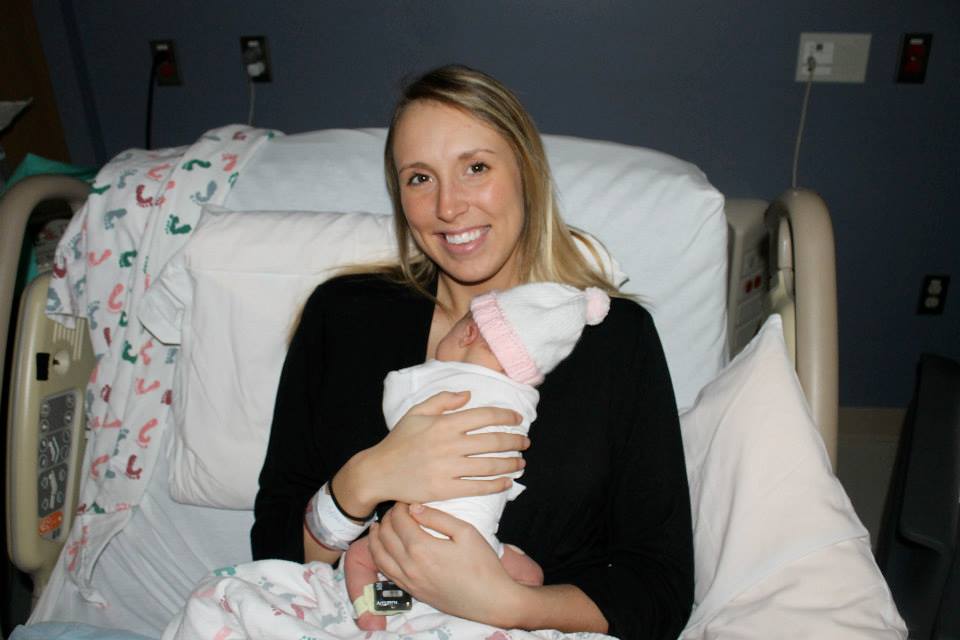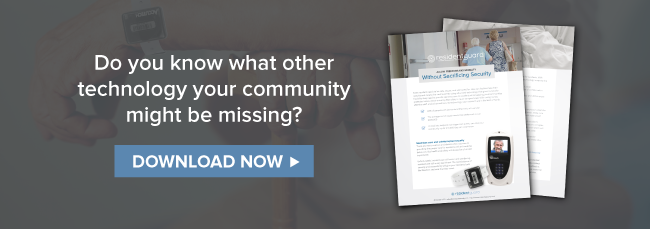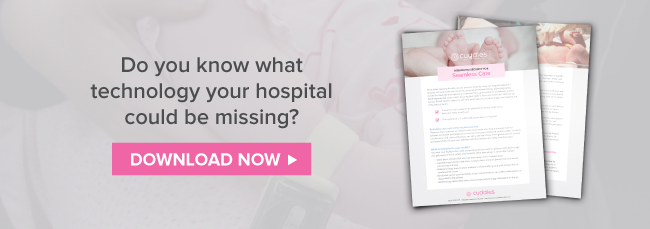From the moment a patient enters your healthcare facility, their safety, comfort, and care are what matter most. But all too often patient safety means more time managing a system and less time focusing on your patients—and it shouldn’t.
Patient safety should be simple. A good healthcare security solution should allow nurses and staff to provide the best care for their patients and impose little to no disruptions to a patient’s day-to-day care.
How Waterproof Security Tags Help John: An 80-Year-Old Resident with Dementia

Simple activities like bathing and therapy can be disruptive to a patient’s care if security tags are not waterproof. Imagine, John, an 80-year old resident with dementia has a water-resistant security tag. That means that every time John is bathed and each time he enters a therapy pool that his band must be removed, monitored, and then reapplied.
With a waterproof security tag, those disruptions are gone. Dementia or cognitive impairments manifest themselves in so many ways and affect each resident differently. Simply removing some of the unnecessary disruptions to your patient’s day improves everyone’s disposition and improves quality of care.
The patients you are protecting don’t display consistent behaviors or patterns, and it can be hard to anticipate any potential harm or safety risks.
How Waterproof Security Tags Help Sarah: A New Mother

Walking into a nice long hot shower is one of the first steps in rehabbing a mother’s body after childbirth. Imagine, Sarah, a 29-year old new mother has a water-resistant tag. She just labored for over 24 hours and now just wants to take a shower. That means that a nurse must respond to her room, remove her tag, reapply it after her shower, and ensure a mother-baby match.
With a waterproof tag, those threats are gone. Instead, Sarah and her nurses can focus on her self-care and ensure the safety of her new baby by maintaining the already established mother-baby match. Merely eliminating these threats creates a positive and calming environment for mother, baby, and staff. After all, a new mother shouldn’t have to worry about small things (like her security tag) but instead focus on healing and bonding with her new baby.
Enhancing Patient Security and Comfort
When a patient is in your care, it’s up to you to keep them safe and comfortable 24/7 regardless of condition or environment. Because these security solutions are RFID technologies that must be worn on the wrist or ankle, there are unique challenges when it comes to any activity involving water. With waterproof tags, your caregivers and patients will have fewer disruptions and more freedoms in their day-to-day lives.
Keeping patients—whether it’s long-term care residents or mothers and their newborn babies—safe is not easy. There is a whole slew of challenges, and removing bands before any water-related activities poses a threat to patient safety. Whether it means a patient wandering out of a caregiving environment or a mother-baby mismatch, it’s a threat that can be resolved with waterproof security bands.
Topics: Cuddles, Hospital, ResidentGuard, Senior Living
SUBSCRIBE TO OUR NEWSLETTER!
RECENT POSTS
- The Future of Baby Footprinting
- Addressing the Rise of Dementia with ResidentGuard Wander Management Solutions
- The Evolution of Infant Protection in Healthcare Technology
- Safeguarding Patient Privacy with Role-Based Access Control
- Essential Features of an Access Control System
- Groundbreaking Blood Test for Alzheimer’s: A Game Changer for Early Detection and Routine Testing
- Early Signs of Dementia Wandering: How to Identify and Manage This Behavior
- Understanding Role-Based Access Control in Physical Security
- How Hospitals Prevent Infant Switching
- Top 10 Security Challenges Facing Hospitals and How to Solve Them
RECENT POSTS
- The Future of Baby Footprinting
- Addressing the Rise of Dementia with ResidentGuard Wander Management Solutions
- The Evolution of Infant Protection in Healthcare Technology
- Safeguarding Patient Privacy with Role-Based Access Control
- Essential Features of an Access Control System
- Groundbreaking Blood Test for Alzheimer’s: A Game Changer for Early Detection and Routine Testing
- Early Signs of Dementia Wandering: How to Identify and Manage This Behavior
- Understanding Role-Based Access Control in Physical Security
- How Hospitals Prevent Infant Switching
- Top 10 Security Challenges Facing Hospitals and How to Solve Them


